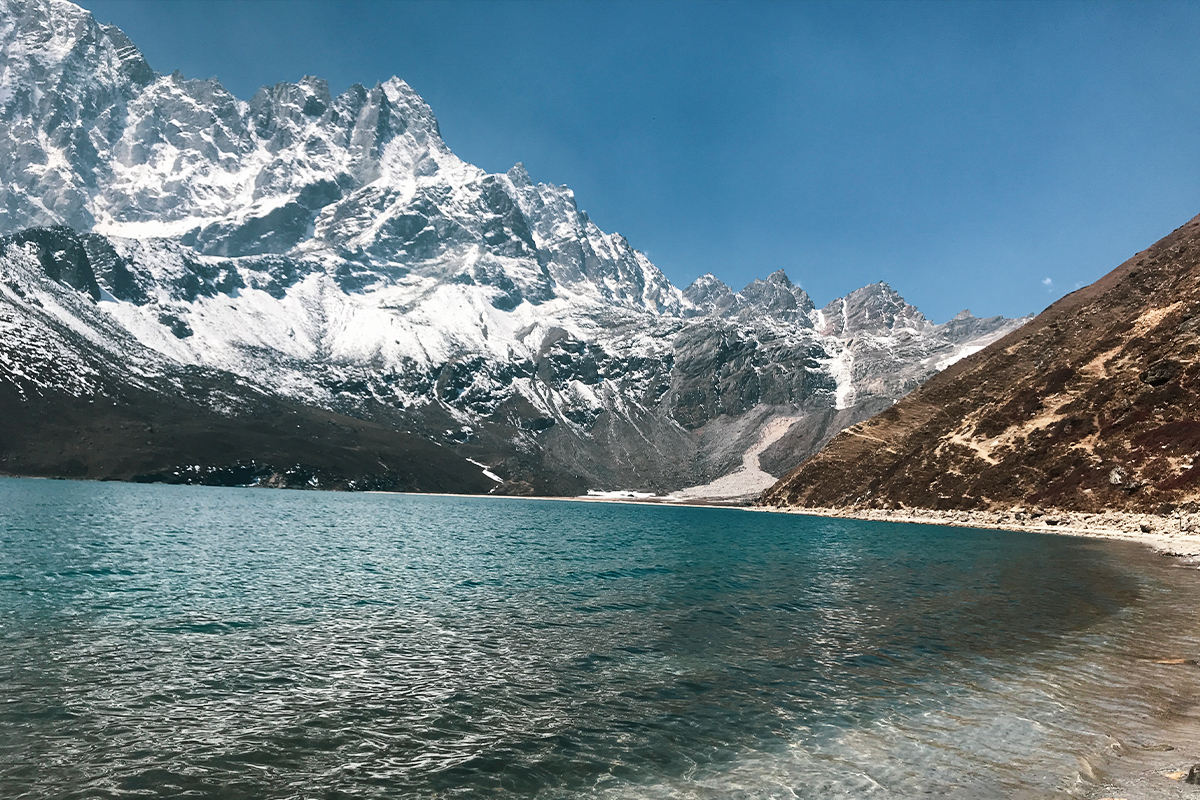Why is staying hydrated crucial while trekking in Nepal?
Trekking in the Himalayas of Nepal imposes a physically demanding challenge that exposes the body to extreme conditions, making proper hydration an absolute necessity. At high altitudes, the thinner air makes it more difficult for the body to absorb oxygen. Staying hydrated helps alleviate symptoms of altitude sickness, such as headaches, nausea, and fatigue, allowing trekkers to acclimatize better and fully enjoy their journey. Additionally, the strenuous nature of trekking involves navigating steep ascents, challenging terrain, and carrying backpacks, leading to excessive sweating and fluid loss. Adequate hydration replenishes these losses, preventing muscle cramps, weakness, and other physical issues that could disrupt the trekking experience.

Despite the colder temperatures in the Himalayas, the body still loses fluids through various mechanisms, making hydration crucial. Trails of Everest Base Camp Trek, Annapurna Base Camp, Manaslu Circuit, Upper Mustang, and other high altitudes experience extreme temperature variations, from intense sun during the day to freezing conditions at night. Staying adequately hydrated helps regulate body temperature, allowing trekkers to adapt to these changes more effectively. Proper hydration can also lower the chance of getting frostbite and hypothermia by helping blood to flow properly and keeping the body temperature normal, stopping the hands and feet from getting too cold and vulnerable to frostbite. Furthermore, dehydration can impair cognitive functions, including decision-making abilities and concentration, which are crucial for navigating the hazardous Himalayan trails safely. Lastly, trekking at high altitudes weakens the immune system, making trekkers more susceptible to illnesses. Hydration supports the immune system's functions, along with good sleep and proper nutrition, reducing the risk of contracting diseases that could disrupt the trekking experience.
Water Sources on the Trails
The Himalayan region of Nepal offers various sources for obtaining drinking water, although many require proper treatment and purification due to potential contamination risks. Local communities and trekkers frequently rely on glacial meltwater streams and natural springs emerging from the ground, which are Himalayan water sources. Some high-altitude lakes like Gokyo and Tilicho also serve as water sources, but the water may contain microorganisms that require purification. In areas with significant rainfall, people employ rainwater harvesting techniques to collect and store water for drinking purposes. Groundwater wells tapping into underground aquifers provide another option in certain areas. During remote treks, trekkers commonly use melted snow and ice from glaciers and snowfields as drinking water sources after treating or purifying them. Regardless of the source, ensuring the safety of drinking water and maintaining good Nepali water quality in the Himalayas is crucial. This involves actively employing appropriate treatment methods such as boiling, filtering, or using chemical disinfectants to eliminate the risks of contamination from human activities, animal waste, or natural pollutants.
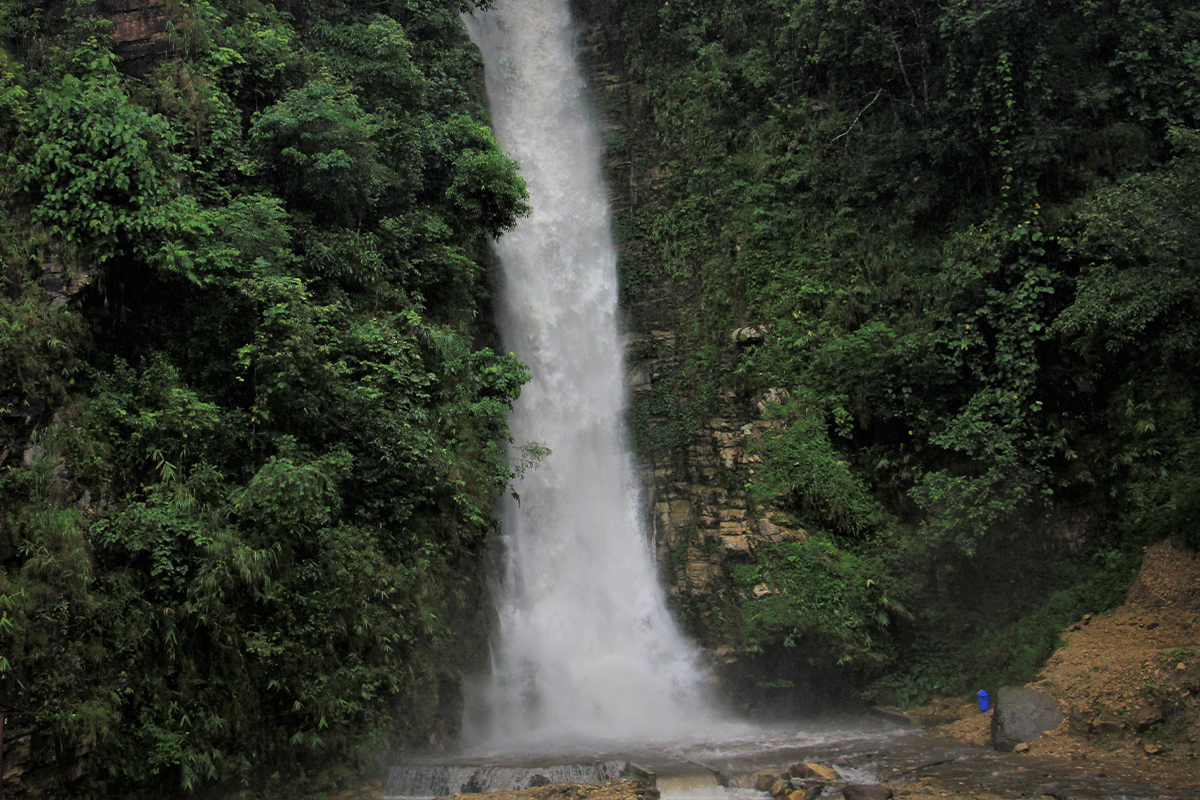
Water Purification while Trekking
While exploring remote areas, trekkers or hikers must prioritize water purification due to the potential presence of harmful pathogens in natural water sources like streams and lakes. Limited access to clean water makes it necessary for them to utilize water purification systems to purify available sources for proper hydration, maintaining energy levels, preventing fatigue, and avoiding altitude sickness. Glacier water contains many minerals, so it needs to be purified before consumption. They can utilize lightweight and portable purification methods to purify water, reducing their reliance on single-use plastic bottles and promoting environmental sustainability. Ensuring safe water consumption and a healthy, enjoyable trekking experience requires trekkers to choose a reliable purification method, carefully follow instructions, and practice good hygiene. Common and effective options suitable for high-altitude treks include filters, chemical treatment tablets, and UV purification devices.
Boiling water is one of the oldest and most effective methods of water purification, particularly useful for trekking and camping. It involves heating water to a rolling boil for at least one minute (longer at higher altitudes) to kill harmful pathogens like bacteria, viruses, and protozoan parasites. Boiling is effective against a wide range of microorganisms, affordability, and ease of use, as it requires only a heat source and container without any additional equipment or chemicals. However, boiling has its drawbacks – it requires a fuel source and time for heating and cooling the water. Additionally, while boiling eliminates biological contaminants, it does not remove chemical pollutants or dissolved solids, and the treated water may have a flat or boiled taste.

Adding chemicals like chlorine or iodine is another common way to purify water. These chemicals kill harmful germs and pathogens in the water. The good things about chemical treatment are that it is lightweight and portable, kills many germs, is not too expensive, and does not require any special equipment besides a container. However, the downsides are that the treated water may taste or smell bad, and there could be health risks from the chemicals if used for too long. Some germs like Cryptosporidium are harder to kill with chemicals. Just like boiling, chemical treatment does not remove other chemical pollutants or dissolved solids originally in the water source. If you notice whitish water on the trails, chlorine has been used to treat the water. Don't worry, the water will return to its normal appearance shortly.
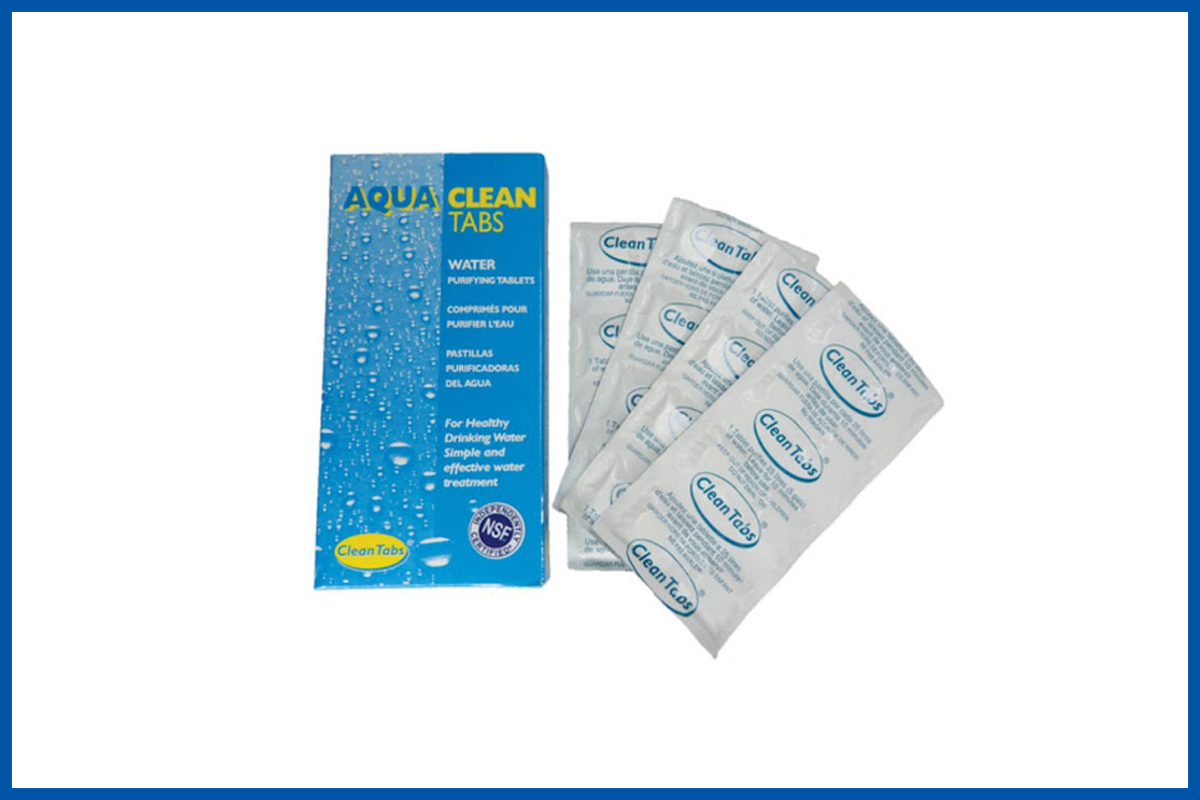
Portable water filters are among the most convenient ways to treat water while trekking. You can carry these small filters in your backpack and use them to remove dirt, bacteria, and other germs from streams, lakes, or other water sources you encounter on the trail. The advantage of portable filters is that they don't require any chemicals or batteries, making the water safe to drink without altering the taste. However, the filters can become clogged with too much dirt, causing them to stop working properly, so you may need to replace them after a while. Additionally, they are unable to remove viruses or chemicals from the water, only the larger contaminants. If you drop and damage the filter, it will not work at all until you can get a new one. Some affordable water filters include the Sawyer Squeeze, LifeStraw Personal Water Filter, and AQUASIV Day Hiker Squeeze Filter.

UV purification effectively utilizes ultraviolet light to inactivate and destroy the genetic material of microorganisms like bacteria, viruses, and protozoan parasites, preventing them from reproducing and causing harm. Key advantages of UV purification include its ability to kill most germs, leave no chemical taste or smell in the treated water, treat water quickly, and the availability of portable UV devices made for hiking and camping, such as SteriPEN Ultra and LARQ bottles. However, these devices require a power source like batteries or solar panels to operate the UV lamp. UV purification does not remove chemical contaminants or dissolved solids like other methods do. Turbid or cloudy water can also reduce its effectiveness by limiting UV penetration. Additionally, UV lamps have a limited lifespan and require periodic replacement.
Combining two or more purification methods is often advisable for optimal safety and effectiveness. For instance, using a filter with chemical treatment or UV light can remove a wider variety of contaminants. Additionally, boiling water after filtration or chemical treatment can further enhance its safety, particularly in areas with known or suspected chemical contamination.
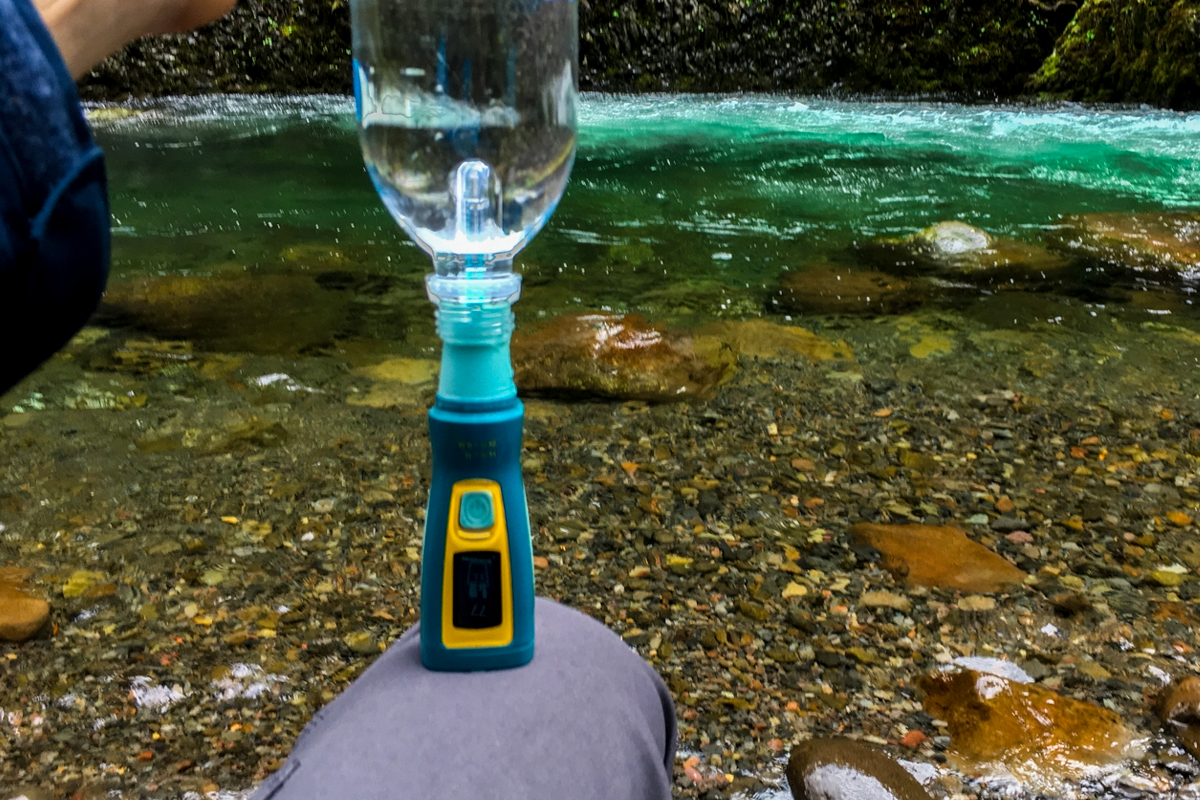
Solar water disinfection, often referred to as SODIS, is a simple and effective method for treating water during trekking or outdoor activities when access to clean drinking water is limited. The process involves filling transparent plastic bottles with water and exposing them to direct sunlight for at least six hours. The ultraviolet rays from the sun eliminate harmful pathogens, such as bacteria, viruses, and protozoa, making the water safe for consumption. This method is particularly useful for hikers and trekkers as it requires no additional equipment or chemicals, and the treated water remains potable for up to two days if stored in the same plastic bottles. SODIS is a cost-effective and environmentally friendly way to ensure access to clean drinking water in remote or undeveloped areas.
How to stay hydrated on Treks?
Drink water frequently and carry an adequate supply
Be sure to drink water before you feel thirsty, as feeling thirsty indicates you have already become dehydrated. Instead, sip water regularly every 15-20 minutes to replace the fluids you are losing through sweat. Drink 2 to 3 liters of water while trekking. Carry an appropriate amount of water based on the length and difficulty of the trek - for most day hikes, carry at least 2-3 liters of water per person. On longer or more strenuous treks, you will need to carry even more water to stay properly hydrated throughout the activity.
Eat hydrating foods and limit dehydrating beverages
Pack foods with high water content like fresh fruits (e.g., oranges, watermelon), vegetables, and soups to help replenish the fluids you lost through sweating. Stay hydrated by having lots of tea and soups like garlic soup, which can also aid with acclimatization. At the same time, limit your caffeine intake from sources like coffee, tea, sodas, and alcoholic beverages, as these beverages act as diuretics and promote dehydration by increasing your urine output. Stick to water-rich foods and avoid diuretic drinks to help you maintain proper hydration levels during your trek.
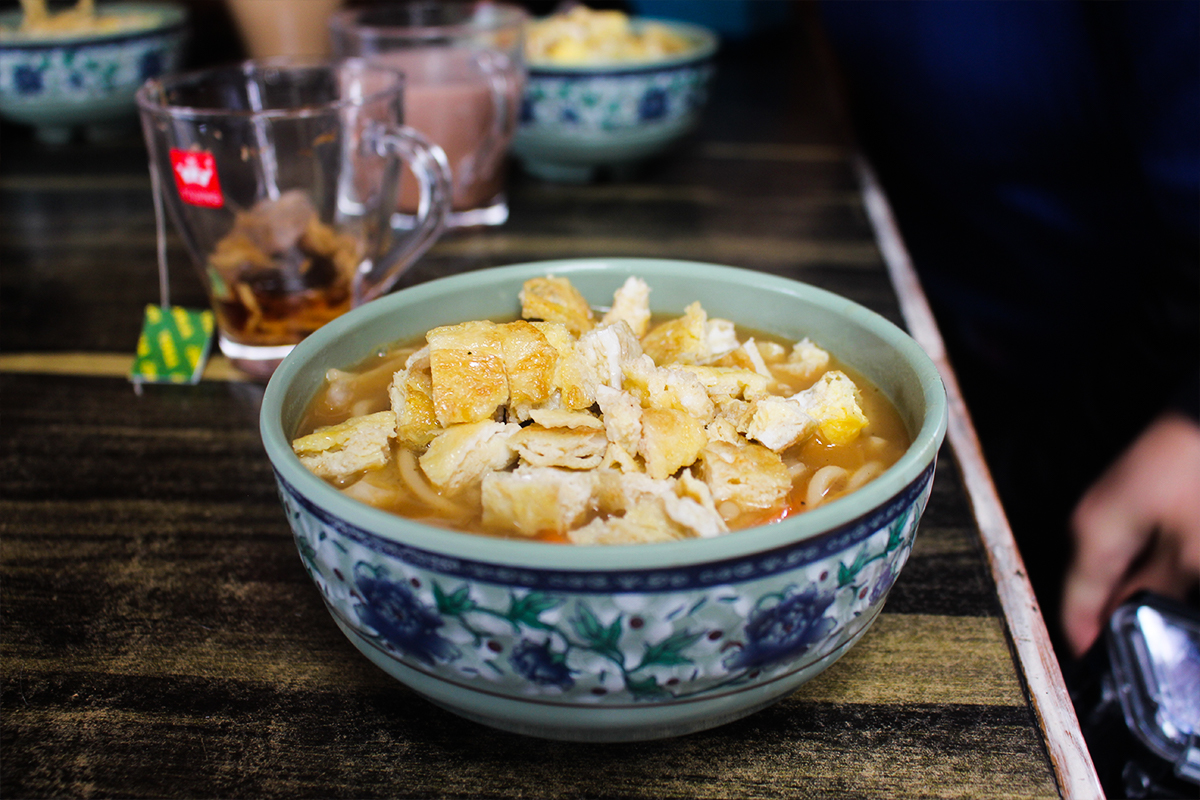
Replenish electrolytes lost during trekking and utilize a hydration pack
Maintain proper hydration by replacing fluids and replenishing the electrolytes you lose through sweating. Drink sports drinks or add electrolyte tablets/powders to your water to replenish essential electrolytes like sodium and potassium. Additionally, use a hydration pack or bladder to make it more convenient for you to drink water frequently while on the move. These allow you to sip water hands-free, reducing the need for you to stop and remove your pack each time you need a drink. Combining electrolyte replacement with the ease of a hydration pack/bladder, you can ensure your body receives the fluids and minerals it needs to stay properly hydrated during extended trekking periods.
Monitor your hydration status and adapt your intake accordingly
Monitor the color of your urine, as it indicates your hydration levels. Pale yellow or clear urine shows proper hydration, while dark yellow or amber urine may signal dehydration. Additionally, prepare to adjust your water intake based on the environmental conditions you will trek in. Drink more fluids when conditions are hot, humid, dry, or at higher altitudes, as these situations will cause you to lose more fluids through increased sweating and respiration. By carefully monitoring the color of your urine and adapting your water consumption to the specific conditions, you can better maintain adequate hydration throughout your trek.
Waterborne Illness and Health risks
Trekking in Nepal's mountainous regions exposes hikers to potential waterborne illnesses and health risks due to the remote nature of the trails and the lack of reliable water sources. Hikers must consider some specific concerns and precautions:
Parasitic infections like cryptosporidium and giardia are widespread in areas of Nepal with poor sanitation, often transmitted through contaminated water sources. These infections typically cause temporary diarrhea, abdominal cramps, nausea, vomiting, low fever, headache, loss of appetite, and weight loss for 1-2 weeks in healthy individuals. However, they can prove life-threatening for those with compromised immune systems. Proper water treatment and hygiene practices are crucial for hikers to prevent the spread of these debilitating parasitic diseases.
Harmful bacteria like E. coli, Salmonella, and Shigella contaminate untreated water sources in rural Nepal, causing diarrheal diseases ranging from abdominal cramps and fever to bloody diarrhea. Improper waste disposal, lack of sewage treatment, and agricultural runoff introduce these pathogens into water sources. Ingesting contaminated water or food poses serious risks, especially for vulnerable groups like children and the immunocompromised.
The highly contagious hepatitis A virus spreads through the fecal-oral route, making it a significant concern in regions with inadequate sanitation and poor hygiene practices. Consuming water or food contaminated with microscopic amounts of feces from an infected person transmits the virus. This virus can survive outside the body for extended periods and withstand certain levels of chlorine treatment. Areas lacking proper sewage disposal systems, handwashing facilities, and food safety measures increase the risk of contracting hepatitis A. The illness causes fever, fatigue, nausea, abdominal discomfort, and jaundice, potentially leading to liver failure in severe cases, particularly among those with preexisting liver conditions.
Precautions to minimize the risks while trekking
Purify water:
Trekkers must purify water from any source, including streams and lakes, before consumption to prevent waterborne illnesses in Nepal. Effective purification methods include boiling, using chemical treatments like chlorine dioxide tablets, or employing portable filters designed to remove harmful pathogens. Neglecting to purify water exposes trekkers to bacterial, viral, and parasitic infections, potentially leading to severe gastrointestinal issues.
Carry sufficient water:
Trekkers should pack enough treated water for their trek, especially in areas where they cannot find water sources or the sources are unreliable. Carrying sufficient treated water ensures trekkers have a safe and readily available supply of drinking water, reducing the temptation to consume untreated water from potentially contaminated sources.
Avoid untreated water:
Trekkers must exercise caution and refrain from drinking directly from streams, rivers, or other untreated water sources, even if they appear clean. Appearances can deceive, and these water bodies may harbor harmful microorganisms invisible to the naked eye.
Maintain hygiene:
Practicing good hygiene is essential for trekkers. They must wash their hands with treated water before handling food or eating, and avoid consuming uncooked or unwashed fruits and vegetables, which may harbor pathogens from contaminated water sources.
Consider vaccinations:
Before traveling to Nepal, trekkers should consult a healthcare professional about recommended vaccinations, such as Hepatitis A and Typhoid. These vaccines can provide additional protection against specific waterborne illnesses, complementing other precautionary measures trekkers take. By taking proper precautions and being vigilant about water treatment and hygiene, you can significantly reduce the risk of contracting waterborne illnesses or experiencing health issues related to contaminated water sources while trekking in the beautiful but remote regions of Nepal.
Conclusion
When hiking in the mountains of Nepal, having clean water to drink becomes extremely important. The high altitude and physical effort of trekking make you need to drink a lot of water to avoid getting dehydrated or suffering from altitude sickness. However, water sources like streams can have harmful germs that can make you sick with things like diarrhea or vomiting. Therefore, before drinking any water, you must purify it first by boiling it, using a filter, adding purification tablets, or utilizing a UV light device. Frequently drinking water, eating hydrating foods like fruit, replacing electrolytes you sweat out, and paying attention to the color of your urine to ensure you're drinking enough clean water also become important. Taking these simple precautions will allow you to safely enjoy an amazing trekking adventure in Nepal's epic Himalayan mountains without getting sick from dirty water.
FAQs
Are there any environmental considerations to keep in mind when purifying water while trekking in Nepal?
- Yes, minimizing environmental impact is important. Avoid single-use plastic bottles by using refillable water containers and portable purification methods. Dispose of waste properly and follow Leave No Trace principles to preserve the natural beauty of Nepal's trekking routes.
Can I drink tap water directly while trekking in Nepal?
- It's not recommended to drink tap water directly without purifying it first, as it may contain high levels of minerals and potentially harmful contaminants. Purify glacier water using appropriate methods before consumption.
Why is it important to drink 3-4 liters of water while trekking?
- Proper hydration is essential to maintain energy levels, prevent dehydration, and support bodily functions during strenuous activities like trekking. Drinking 3-4 liters of water helps replenish fluids lost through sweating and respiration, ensuring optimal performance and reducing the risk of fatigue or altitude sickness.
How can I ensure safe water consumption and prevent waterborne illnesses while trekking in Nepal?
- Besides purifying water, practice good hygiene by washing hands with soap and water before handling food or eating. Avoid consuming raw or undercooked food, and use hand sanitizer when handwashing facilities are unavailable.
